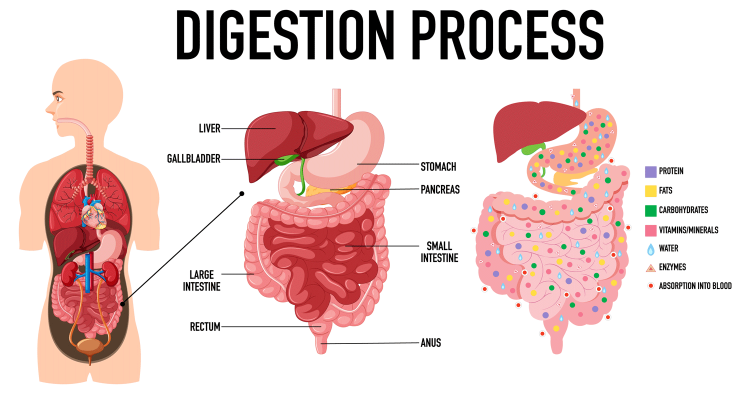Intermittent fasting is the latest buzzword in fitness circles. Practitioners of this form of calorie control swear by it as a means to achieve a better state of being. Athletes, in particular, are especially gong-ho about intermittent fasting, claiming that it helps them maximize their muscle gain while boosting metabolism.
One of the most popular fitness trends out there nowadays is fasted running. Those who practice it say that it has made a world of difference to their fitness levels while helping them shed fat. This article delves into the world of fasted running, looking into its pros and cons, and tries to give you a ringside view into what is now undoubtedly a major health trend.
Fasted running is popular for two main reasons. Firstly, there is a camp of followers who feel they do not have sufficient time in the morning to eat before going on a run. They also find that running on a full stomach causes cramps. The other camp of followers goes for fasted runs because they want the added benefits of running on an empty stomach, like fat loss.
A Quick Look at Intermittent Fasting
Intermittent fasting involves going without food for a certain number of hours a day and consuming all your calories in the remaining hours. These periods are known as the fasting window and feeding window, respectively. It has been claimed that intermittent fasting helps to lose weight, improve insulin levels, improve cardiovascular health, improve brain health, and potentially prevent cancer.
During fasting, the body uses up all its glycogen stores for energy and undergoes a metabolic switch wherein it enters a state known as ketosis. In ketosis, the body breaks down its fat stores to make ketone bodies that fuel the body in the absence of glycogen.
Level Up Your Fitness: Join our 💪 strong community in Fitness Volt Newsletter. Get daily inspiration, expert-backed workouts, nutrition tips, the latest in strength sports, and the support you need to reach your goals. Subscribe for free!
Intermittent fasting is a favorite with athletes as it helps them build more muscle while boosting their metabolic rates. Anabolic fasting, in particular, helps with this. From rank beginners to hardcore fasters, intermittent fasting has something for everyone. It has various routines and schedules that can be customized according to your needs.
During fasting, it is important to drink enough water to stay hydrated. If you feel hungry, go for a shot of lemon water to keep yourself satiated. If you are starving, sip a cup of bone broth during your fasting window. Remember, you must avoid consuming any calories during the fast to reap the maximum benefits of intermittent fasting.
What is Fasted Running?
Simply put, fasted running means that you run on an empty stomach. Another way of defining it is that you run after going through a long period without food. The majority of people practice fasted running as the very first activity in the morning before they have breakfast or consume any kind of pre-run snacks.
Running is an intense activity that requires lots of energy. This is why eating normally in the non-fasting hours leading up to the running time is crucial. This means you must consume enough nutrients to get sufficient energy to take care of running demands and other activities in your daily routine. Based on the caloric intake and volume of the last meal you had, if four hours have passed after your last snack or six hours have passed after your last meal, you are doing fasted running.
Besides getting sufficient energy for your running sessions, looking after hydration and recovery is also important. Depending on the kind of intermittent fasting you are doing, fluids may or may not be a part of your schedule. It is very important to be hydrated adequately to compensate for the fluid and salt loss during running.
You must also consider recovery after the running session. You need to pay attention to your running schedule so that you can plan your fasting periods to accommodate recovery times. During recovery, your body will have to replenish the energy it burnt during your exercise session. To do this, it has to have a ready supply of sugars, nutrients, and amino acids.
Related: Calories Burned Running Calculator
Benefits of Fasted Running
There are quite a few benefits attached to fasted running. Check them out here:
Fasted Running Could Increase Fat Oxidation
Fasted running increases fat oxidation, meaning that a larger percentage of calories you burn as you run comes from stored body fat instead of stored glycogen in the muscles. Your body has limited glycogen stores in the skeletal muscles and the liver; these levels will go down overnight during fasting.
An athlete who is endurance trained can store up to 2,000 calories in the form of glycogen in the muscles and the liver, while other runners can store about 1,500 calories. This is why, when doing fasted running, your body will try to conserve these limited glycogen levels and instead burn fat for energy.
A study has shown that you can burn 20% more fat during endurance training, like running on an empty stomach. [1]
Fasted Running Could Improve Digestive Problems
If you have a sensitive stomach, you might find that fasted running reduces gas, side stitches, cramping, bloating, and runner’s trots. Studies have discovered that you are more likely to have nausea while running if you are running on a full stomach. [2]
During exercise, blood gets diverted from the digestive tract to meet the enhanced oxygen demands of muscles. Your digestion will cease, and anything sitting around your stomach will stay there without getting digested. This irritates the gut, causing nausea, gas, and bloating.
If you have a sensitive stomach, even snacks can cause nausea. Hence, fasted running will be a good option for you.
Fasted Running Brings Greater Loss of Weight
Studies have shown that exercising on an empty stomach will cause you to consume fewer calories during the day. [3]
Possibly, fasted running decreases appetite by suppressing the hunger hormone ghrelin. Hence, while fasted running does not directly cause weight loss because it will not consume more calories compared to running on a fed stomach, it is possible that fasted running can help speed up weight loss because you are consuming fewer calories during the day.
Level Up Your Fitness: Join our 💪 strong community in Fitness Volt Newsletter. Get daily inspiration, expert-backed workouts, nutrition tips, the latest in strength sports, and the support you need to reach your goals. Subscribe for free!
Fasted Running Improves the Regulation of Blood Sugar
One main concern that runners have before they do fasted running is that they may become hypoglycemic, a state where their blood sugar is too low. This can cause headaches, fatigue, dizziness, nausea, irritability, and decreased performance.
However, studies show that fasted running does not cause a decrease in blood sugar, even in athletes with diabetes. [4]
Studies have even shown that if you exercise in a fasted state, like running, it can improve insulin sensitivity, leading to better blood sugar control. [5]
Even when backed up by these findings, it would make sense for you to consult a doctor if you have diabetes before you do fasted running.
Drawbacks to Fasted Running
While fasted running has wonderful benefits, it has some potential drawbacks. We take a look at these below:
Fasted Running Could Cause Muscle Loss
When you exercise in a fasted state, glycogen stores get depleted quickly, and your body turns to the fat deposits and the muscles for energy. So it is possible that fasted running can lead to muscle protein depletion, leading to muscle loss.
Some evidence suggests that doing fasted cardio can potentially increase the depletion of muscle for energy, which means that when you do fasted running, your body may begin to burn protein for fuel. [6]
Fasted Running Could Increase Cortisol Levels in the Body
Cortisol is one of the primary stress hormones in the body, and chronically elevated cortisol levels are associated with a signal to trigger the body to store fat, primarily in the abdominal region. We must remember that any type of exercise, like fasted running, is a stressor to the body. Even hunger, as well as prolonged fasting, act as stressors.
Hence, combining the two, i.e., fasting and exercise, can increase cortisol levels significantly, as studies have shown. [7]
Fasted Running Could Lead to Hormonal Imbalances
While fasted running can increase cortisol levels, some studies have shown that exercising in a fasted state could cause more hormone imbalances [8]. This can increase your risk of injury and negatively affect your recovery after workouts and the gains you derive from fasted running.
Fasted Running May Hamper Athletic Performance
The biggest concern runners have with fasted running is that it can hamper their performance, as research has shown, because they are not consuming adequate fuel before running. [9]
Your strength, speed, and intensity levels will naturally be higher if you run in a fed state. If you eat a meal rich in carbohydrates and protein before running, you can continue for a longer period compared to running on an empty stomach. Fasted running may hamper your ability to run for long distances and durations.
How Long Should a Fasted Run Last?
Unfortunately, there is no rule to determine the duration of your fasted run. The length of your run is influenced by your training intensity. Because of the lack of glycogen stores, any high-intensity effort would naturally need to be quite short, as it depends entirely on the glycogen stores.
On the other hand, if you are doing a long, slow recovery run, it can be done in a glycogen-depleted condition, as your energy will be derived from your fat stores. If you want to adopt fat burning as a principle, you should go for longer, slower runs. You should start with short periods and gradually work your way up to, ideally, one hour of a slow run.
At What Pace Should I Conduct a Fasted Run?
The most important factor in this question is the intensity at which you run. If you are looking for endurance, a long run should be conducted at 70-75% of your aerobic power. You could also go for shorter, higher-intensity runs, but these runs will be short, and you will need a lot of time to recover. You also have to be mindful that you replenish your carbohydrate stores immediately after the short burst run so that recovery and repair can happen optimally.
Frequently Asked Questions
What happens when you do a fasted run?
Fasted running is famous for its fat-burning abilities. When you do a fasted run, your glycogen levels will be low. Hence, your body will start to burn the fat stores it has, in what is known as fat oxidation, to fuel your run. This leads to fat loss.
Will running in a fasted state cause an increase in heart rate?
Fasted exercise, like a fasted run, will increase your oxygen uptake by 9.3% and your heart rate by 8.4%. This will happen within the first 60 minutes of exercise.
Should I eat after a fasted run?
You should eat a combination of carbs and protein within 60 minutes of ending the fasting run.
What should I eat after running fasted?
After a fasted run, you should consume a mix of protein and carbohydrates to promote muscle growth. This meal should be consumed immediately after the workout.
Conclusion
Including fasted running into your training regimen can have several potential benefits for your health and fitness. Training your body to burn fat for fuel improves your endurance and reduces the risk of chronic diseases. But remember to consult a doctor before you start because fasted running is not for everybody.
If you aim to take your running game to the next level, fasted running could be the solution. Irrespective of whether you are an amateur runner or a professional, fasted running is a very effective way to challenge yourself, give your performance a boost, and reach your fitness goals. Who knows, you may even discover an affinity for fasted running in the process.
Remember, fasting running is not a one-size-fits-all solution, and you must experiment with various training methods to discover the one that suits you best. So what are you waiting for? Lace up and hit the road!
References
- Vieira, Alexandra Ferreira, et al. “Effects of Aerobic Exercise Performed in Fasted V. Fed State on Fat and Carbohydrate Metabolism in Adults: A Systematic Review and Meta-analysis | British Journal of Nutrition | Cambridge Core.” Cambridge Core, 9 Sept. 2016, https://doi.org/10.1017/S0007114516003160.
- “Exercise-induced Nausea Is Exaggerated by Eating.” Exercise-induced Nausea Is Exaggerated by Eating – ScienceDirect, 25 May 2002, https://doi.org/10.1006/appe.2000.0391.
- Bachman, Jessica L., et al. “Exercising in the Fasted State Reduced 24-Hour Energy Intake in Active Male Adults.” PubMed Central (PMC), 21 Sept. 2016, https://doi.org/10.1155/2016/1984198.
- https://academic.oup.com/jcem/article/104/1/111/5105939?login=true. academic.oup.com/jcem/article/104/1/111/5105939?login=true.
- Rothschild, Jeffrey A., et al. “What Should I Eat Before Exercise? Pre-Exercise Nutrition and the Response to Endurance Exercise: Current Prospective and Future Directions.” PubMed Central (PMC), 12 Nov. 2020, https://doi.org/10.3390/nu12113473.
- “Does Cardio After an Overnight Fast Maximize Fat Loss? : Strength and Conditioning Journal.” LWW, https://doi.org/10.1519/SSC.0b013e31820396ec.
- Kim, Tae Woon, et al. “Comparison of the Effects of Acute Exercise After Overnight Fasting Andbreakfast on Energy Substrate and Hormone Levels in Obese Men.” PubMed Central (PMC), 30 June 2015, https://doi.org/10.1589/jpts.27.1929.
- Rothschild, Jeffrey A., et al. “What Should I Eat Before Exercise? Pre-Exercise Nutrition and the Response to Endurance Exercise: Current Prospective and Future Directions.” PubMed Central (PMC), 12 Nov. 2020, https://doi.org/10.3390/nu12113473.
- “Intermittent Fasting and Its Effects on Athletic… : Current Sports Medicine Reports.” LWW, https://doi.org/10.1249/JSR.0000000000000614.














I love this column, you have done a great job spearheading the interest of weight loss in the mainstream. As an up and coming weight loss blogger can you please critique my page